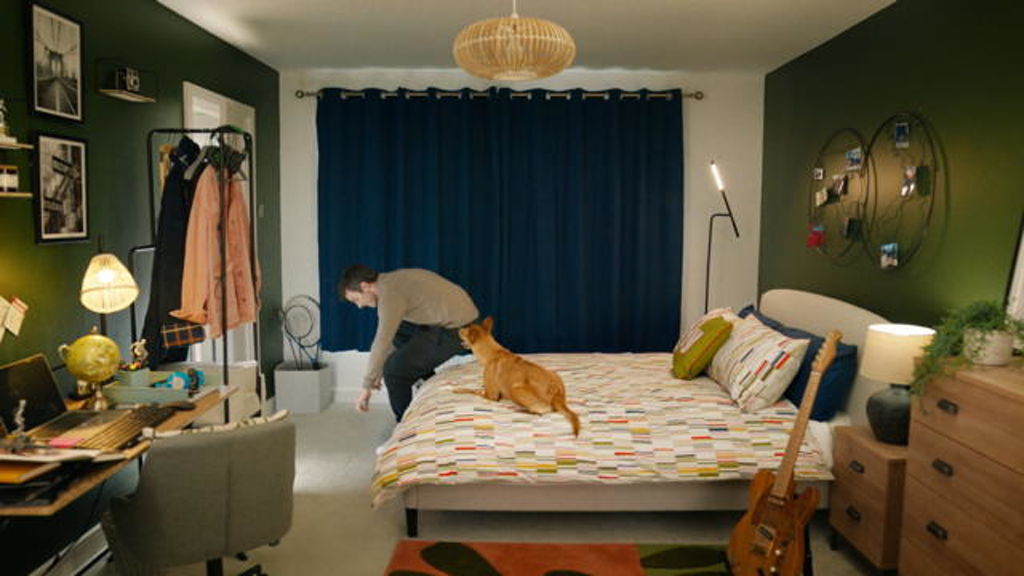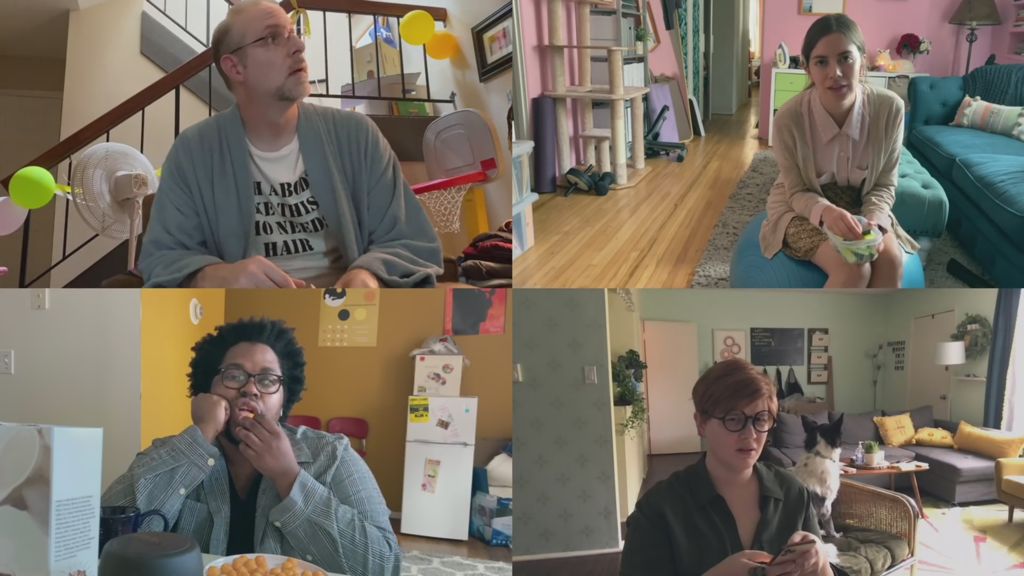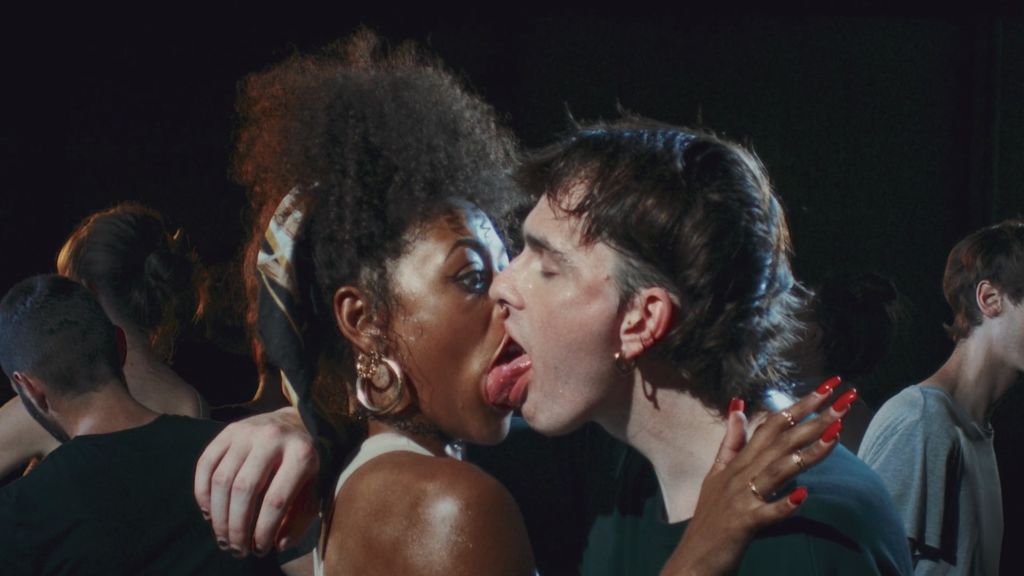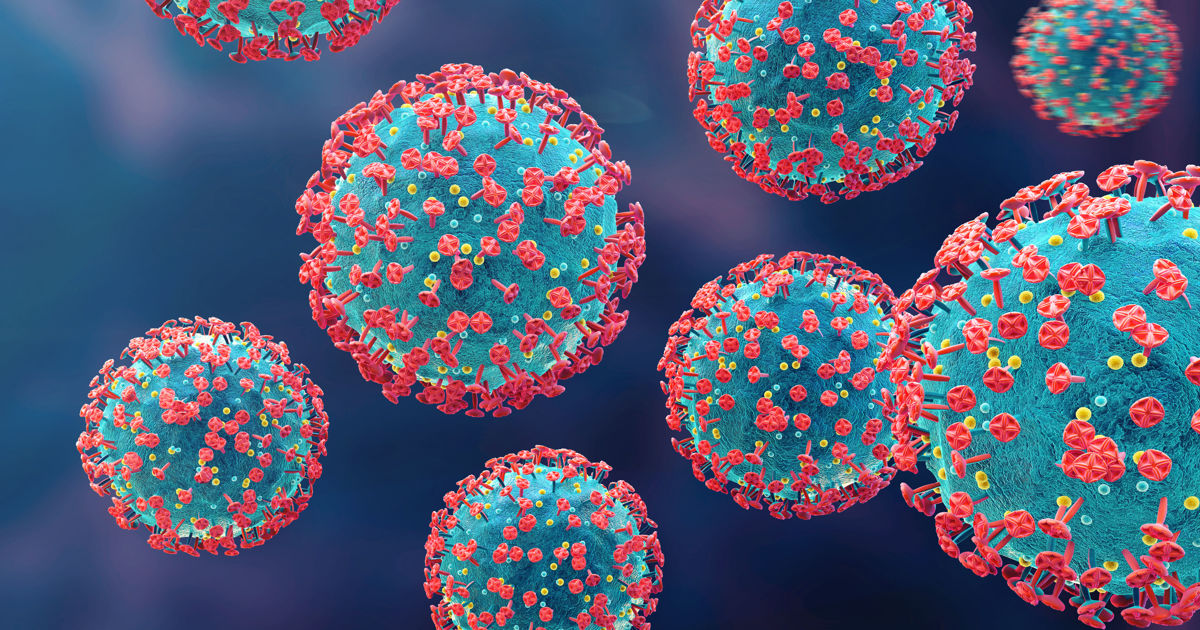Life and work post Covid – agencies
In the first of two explorations of how the pandemic has affected the industry, Tim Cumming talks to agency heads and creatives about how changes wrought by Covid are re shaping and changing the way work is made and received, and how it has impacted the contract between brands, creatives and consumers.
Virtual meetings, remote shooting, a bigger portion of the pie for post, a steepening challenge for brand communications and various forms of hybrid working are all jostling in the new ecology that has sprouted up in the wake of the Covid pandemic.
Its successive impacts are all over us and the way we work in 2022.
“There’s a Chinese proverb that says when the winds of change blow, some build walls, others build windmills. I reckon this holds true for Covid and our industry,” says Jack Nunn, creative director at Special Group London. “A lot of agencies and brands went into their shells and took refuge behind play-it-safe comms. Many still remain there now. But those who doubled down on creativity are all the better for it.”
There’s a bit of a hangover of advertising reflecting life back at people and saying, ‘don’t worry, life’s shit but we’re here for you’.
Over at AMV BBDO, head of strategy Lola Neves agrees on the problem of the play-it-safe approach for brands handling the adversity and uncertainty of pandemic living. “There’s a lot of recent work that looks very similar,” she says. “There’s a bit of a hangover of advertising reflecting life back at people and saying, ‘don’t worry, life’s shit but we’re here for you’. The distinctiveness of the brands starts to dissolve in that context.”
Her fellow head of strategy Sam Williams agrees. “We spend a lot of time reflecting back insights rather than looking at how brands can help solve them,” he says. “We’re getting a lot of campaigns saying ‘we’re by your side’ ‘we’re with you for all of your life’, but it’s not pushing a solution. There are five key emotional drivers we’ve tracked through the pandemic – risk, shifts in values, importance of optimism, empathy and resilience. Life is hard right now, so what do people actually need to weather that, and what role can your brand play within that?”

BBH's campaign, banned by ASA for its implied expletives, saw Tesco Mobile call out its competitors over price hikes and commit to helping its consumers through tough times.
“Covid had a big impact on viewing behaviour and shopping behaviour,” adds Neves, “and that has a huge impact on creativity, because it impacts business problems, media and culture, which all impact what we’re making in terms of creative output.”
For Special Group’s Jack Nunn, what consumers are looking for right now is not an alliance with their pain but a stimulus for something that’s simple, old-fashioned, and sometimes very hard to find: FUN.
For many consumers, coming out of that dark period of existential threat has turned into a deep need to be social and seek joy and meaning, despite the economic pressures.
“We’ve had lockdowns, boring daily routines and virtually no overseas travel,” he says. “People are craving fun, entertainment and the unexpected like never before. Now is an unbelievable opportunity for brands to be bold, funny, insightful, innovative … or just plain silly. Anything, so long as it’s interesting. “Post-Covid, consumers want their hands sanitised and their advertising anything but.”
Victoria Day, managing director of advertising, brand and content at Ogilvy UK, is one who takes to the sunny side of the street when it comes to post-Covid impacts. “The pandemic underscored how incredibly adaptable and robust our industry is, which of course is because of our creativity. Our ability to think differently and shape-shift as the context changes around us is why we continue to thrive.”
But she, too, sees a need for brand communications to find their spot in the sun, rather than living under the shadow of pandemic conditions. “For many consumers, coming out of that dark period of existential threat has turned into a deep need to be social and seek joy and meaning, despite the economic pressures.”
Credits
powered by
- Agency Creature of London/London
- Production Company Hungry Man
- Director David Kerr
-
-
Unlock full credits and more with a Source + shots membership.
Credits
powered by
- Agency Creature of London/London
- Production Company Hungry Man
- Director David Kerr
- Post Production Rascal Post Production
- Producer Jack Beardsley
- Editor Art Jones
- Sound Designer/Audio Mixer Dave Robinson / (Sound Designer/Audio Mixer)
- Chief Creative Officer Ben Middleton
- Chief Creative Officer Stu Outhwaite-Noel
- Creative Director John Osborne
- Producer Lilly Alter

Credits
powered by
- Agency Creature of London/London
- Production Company Hungry Man
- Director David Kerr
- Post Production Rascal Post Production
- Producer Jack Beardsley
- Editor Art Jones
- Sound Designer/Audio Mixer Dave Robinson / (Sound Designer/Audio Mixer)
- Chief Creative Officer Ben Middleton
- Chief Creative Officer Stu Outhwaite-Noel
- Creative Director John Osborne
- Producer Lilly Alter
Creature London's Wit's End campaign for Dunhelm, posited the notion that "whatever life throws your way" a nice new throw, or similar, from the homewares store will bring cheer.
Over at Creature London, chief creative officer Stu Outhwaite-Noel believes that if the pandemic did one thing that was universally true, “it stopped us and made everyone think about their own lives.” He sees not a pent-up sense of fun being unleashed, but some serious self-reflection. “Closing my eyes and imagining all the work that has come out this year, there has been quite a lot of empowering, do-it-yourself, be you, do-your-thing messaging. There’s a lot work that has focused on consumers’ wants and desires, playing to that slightly more philosophical place in the world.”
Hybrid working has meant we can bring in talent from outside of London, we can have people living where they like, but to do so we added in structures and practices... These systems and active learning structures should stay.
For Creature’s head of strategy Andrew Gibson, brands are facing something they’ve not had to for much of their existence – the unknowable. “We’re seeing more and more tactical work, less and less longer-term brand-building, a lot of it has a much more tactical leaver,” he says. “Because more and more people, especially boards, believe the future is unknowable, therefore why would I try to plan for three or five years down the line, when no one has an earthly clue as to what is going to happen.”
Credits
powered by
- Agency Engine/London
- Production Company Aardman Animations
- Director Peter Peake
-
-
Unlock full credits and more with a Source + shots membership.
Credits
powered by
- Agency Engine/London
- Production Company Aardman Animations
- Director Peter Peake
- Sound Design Jungle Studios
- Producer Sami Goddard
- Animator Jane Davies
- Sound Designer Ben Leeves
- Compositor/Colourist Paule Quinton
- Assistant Producer Henry Davies
- Chief Creative Officer Billy Faithfull
- Creative Pete Ioulianou
- Creative Ollie Agius
- Creative Director Steve Hawthorne
- Creative Director Katy Hopkins
- Producer Laura Melville

Credits
powered by
- Agency Engine/London
- Production Company Aardman Animations
- Director Peter Peake
- Sound Design Jungle Studios
- Producer Sami Goddard
- Animator Jane Davies
- Sound Designer Ben Leeves
- Compositor/Colourist Paule Quinton
- Assistant Producer Henry Davies
- Chief Creative Officer Billy Faithfull
- Creative Pete Ioulianou
- Creative Ollie Agius
- Creative Director Steve Hawthorne
- Creative Director Katy Hopkins
- Producer Laura Melville
This philosophical Aardman animation for animal charity The Born Free Foundation, used human lockdown to reflection on the effect imprisonment and isolation has on animals.
For many agencies, and all their staff and clients, the biggest change wrought by Covid is working at home, thinking ‘outside the box’ of office culture. It’s a development stacked with pluses – and some minuses.
“It created this amazing opportunity to make a hybrid working environment, which in theory means we can bring in talent from outside of London, we can have people living where they like, but to do so we added in structures and practices,” says Creature’s Andrew Gibson. “These systems and active learning structures should stay. It’s thrown a lot of focus on how young talent picks up and develops and works and learns in an agency.”
There’s no question creative departments are suffering from Long Covid. Inspiration and motivation levels feel pretty low across the board, teams are fatigued and juniors have been robbed of a few years of face-to-face learning and training.
Grace Francis at WONGDOODY compares the rise of hybrid working as a revolution akin to women entering the workplace in the Second World War. “Freedom to work outside the office is something I didn’t think I would get in my lifetime,” she says. “It’s especially transformative for people who have disabilities, or who are parents or caregivers.”
However, there is much be said for that all-in-one-place model, where those unpredictable moments of serendipity, of chance operations and offhand remarks can kick down a creative blockage. As Jack Nunn at Special says: “There’s no question creative departments are suffering from Long Covid. Inspiration and motivation levels feel pretty low across the board, teams are fatigued and juniors have been robbed of a few years of face-to-face learning and training. Things will get better, but it’ll take time and extra empathy.
“For me, the biggest thing I’ve missed is the five-minute period after a meeting where everyone’s still sitting in the room chatting, and someone might throw out a ‘dumb’ idea off the cuff – which is usually pure, unfiltered genius. When most days are back-to-back Zoom calls that everyone hangs up from, you just don’t get that.”
Credits
powered by
- Agency Client Direct
- Production Company SMUGGLER
- Director Mark Molloy
-
-
Unlock full credits and more with a Source + shots membership.
Credits
powered by
- Agency Client Direct
- Production Company SMUGGLER
- Director Mark Molloy
- Executive Producer Patrick Milling-Smith
- Executive Producer Brian Carmody
- Executive Producer Sue Yeon Ahn
- DP Greig Fraser
- Editor Neil Smith
- Editor Stewart Reeves
- VFX Company a52
- VFX Supervisor Urs Furrer
- Creative Director Dong Hoon Jun
- Assistant Director Anthony Dimino
- Line Producer Arlene McGann
- Production Designer Jason Hougaard
- Costume Designer Michelle Martini
- Executive Producer Monica Wilkins

Credits
powered by
- Agency Client Direct
- Production Company SMUGGLER
- Director Mark Molloy
- Executive Producer Patrick Milling-Smith
- Executive Producer Brian Carmody
- Executive Producer Sue Yeon Ahn
- DP Greig Fraser
- Editor Neil Smith
- Editor Stewart Reeves
- VFX Company a52
- VFX Supervisor Urs Furrer
- Creative Director Dong Hoon Jun
- Assistant Director Anthony Dimino
- Line Producer Arlene McGann
- Production Designer Jason Hougaard
- Costume Designer Michelle Martini
- Executive Producer Monica Wilkins
This amusing 2020 spot from Apple, directed by Mark Molloy through SMUGGLER, documented those tricky early days of adapting to WFH life.
For Emily Marr, head of production at Leo Burnett, “having no choice but to work from home during lockdown was not a good thing”. She thinks the current hybrid model “has been a bonus in terms of allowing people to address their work life-balance”. But while that balance is not going to be upended any time soon, what if it unbalances the creative drive?
“Face-to-face time with one’s colleagues and clients is absolutely vital both for the work and for ongoing relations,” adds Marr. “I love being surrounded by all the lovely Leos lot, but to also have that flexibility is a very big positive.”
Benedict Buckland, CCO at b2b agency alan, is less sure. “That whole chance encounters thing, the serendipity of person to person, there’s a hell of a lot of truth in it – just this week, we had a cliché of a water cooler conversation, and it was a really good idea. But you lose any chance encounters when you work remotely. Everything becomes intentional, everything becomes transactional when you go in on a call. You’re missing the opportunity to react to random stimuli.”
We’ve had days in the office where there have been several big client meetings, and being able to sit across table look a client in eyes and discuss work together gets you so much quicker to that end point.
He suggests that the ways of thinking about things, and therefore their outcomes, become more logical and linear if creatives are working remotely. “You do a piece of work to a brief then you send it over, and it’s reviewed, but it’s reviewed, to a degree, in a silo. So you lose that opportunity to go left or right, which you’d otherwise get if you were in a room together. The pace of the conversation is so different. What online virtual communication means is that you are very specific about why you are getting on to that phone, so you don’t allow the same tangential conversations to emerge. Things end up being time-bound in a different way.”
Credits
powered by
- Agency Mutant
- Production Company Hamlet
- Director Angelo Cerisara
-
-
Unlock full credits and more with a Source + shots membership.
Credits
powered by
- Agency Mutant
- Production Company Hamlet
- Director Angelo Cerisara
- Sound Design Raygun
- VFX Divide
- Creative Director Odin Saille
- Art Director Usman Abdul
- Creative Ruben Van Maldeghem
- Creative Usman Abdul
- Creative Catherine Hermans
- Producer Minnie Tran
- Executive Producer/Founding Partner Ruben Goots
- Executive Producer/Founding Partner Jason Felstead
- Producer Pim Verhaert
- Post Producer Dominique Ruys
- Producer Pim Verhaert
- DP Edouard Le Grelle
- Editor Angelo Cerisara
- Colorist Francis Qureshi
- VFX Supervisor Maarten Baert

Credits
powered by
- Agency Mutant
- Production Company Hamlet
- Director Angelo Cerisara
- Sound Design Raygun
- VFX Divide
- Creative Director Odin Saille
- Art Director Usman Abdul
- Creative Ruben Van Maldeghem
- Creative Usman Abdul
- Creative Catherine Hermans
- Producer Minnie Tran
- Executive Producer/Founding Partner Ruben Goots
- Executive Producer/Founding Partner Jason Felstead
- Producer Pim Verhaert
- Post Producer Dominique Ruys
- Producer Pim Verhaert
- DP Edouard Le Grelle
- Editor Angelo Cerisara
- Colorist Francis Qureshi
- VFX Supervisor Maarten Baert
While remote working has its benefits, IRL interactions can be so much more creative and... stimulating, as this post-lockdown celebration spot for StuBru reminds us.
For Buckland, the best ideas often come as you’re leaving a room together, and you’re going through that transitional period back to your desk, or to lunch, and your mind is operating in a different way. Harder to replicate with that End Call button. “People’s minds don’t necessarily work well in that kind of formalised linear way,” he says. “If you’re trying to solve a problem, to come up with an idea or work out a strategy, sometimes you need different stimuli to stimulate yourself into thinking about something in the right way, to consider a different factor.”
There’s greater collaboration happening globally. It existed before but it’s been accelerated.
It’s an issue that hits home for AMV BBDO’s Sam Williams. “We’ve had days in the office where there have been several big client meetings, and being able to sit across table look a client in eyes and discuss work together gets you so much quicker to that end point,” he says. “Remote working hasn’t yet found the solution that enables that.”
However, while a grid of screens on remote calls may not be the transitional, protean creative environment the industry is used to, it does offer benefits in terms of speed, global reach and diversity of viewpoint and culture. As Williams points out: “There’s greater collaboration happening globally. It existed before but it’s been accelerated. I was on a pitch recently and we very quickly were able to build an international team of strategists, getting very nuanced local insights on things, and collaborating in a way that was previously not possible, and at much greater speed.”
Credits
powered by
- Agency Heimat/Berlin
- Production Company Stink/Germany
- Director Traktor
-
-
Unlock full credits and more with a Source + shots membership.
Credits
powered by
- Agency Heimat/Berlin
- Production Company Stink/Germany
- Director Traktor
- Editing Final Cut/London
- VFX/Post Production Katalyst
- Colorist Jean-Clement Soret
- Sound Design Machine Sound/London
- Sound Design/Audio Mix Loft Studios/Berlin
- Music Finger Music/London
- Executive Producer Moritz Merkel
- DP Anthony Dod Mantle
- Editor Rick Russell
- Sound Designer Alex Bingham
- Sound Designer/Audio Mixer David Arnold / (Sound Designer)
- Chief Creative Officer Matthias Storath
- Creative Director Guido Heffels
- Creative Director Marlon Fischer
- Producer Kerstin Heffels

Credits
powered by
- Agency Heimat/Berlin
- Production Company Stink/Germany
- Director Traktor
- Editing Final Cut/London
- VFX/Post Production Katalyst
- Colorist Jean-Clement Soret
- Sound Design Machine Sound/London
- Sound Design/Audio Mix Loft Studios/Berlin
- Music Finger Music/London
- Executive Producer Moritz Merkel
- DP Anthony Dod Mantle
- Editor Rick Russell
- Sound Designer Alex Bingham
- Sound Designer/Audio Mixer David Arnold / (Sound Designer)
- Chief Creative Officer Matthias Storath
- Creative Director Guido Heffels
- Creative Director Marlon Fischer
- Producer Kerstin Heffels
This spring's Traktor-directed Hornbach ad, featuring terrific triffids on the rampage, is an example of the 'funtastic' light-hearted messaging needed in the dark times we are facing.
If there’s one thing that signals a return to how things were before Covid, it’s looking for some kind of funtastic positive messaging for consumers to get their teeth into. Which isn’t so easy during an eye-watering cost of living crisis and war in Ukraine that could, like Covid, go global very quickly.
With consumers confronted by a rack of economic life challenges almost as scary as a masked figure running after you up a dark alley, Benedict Buckland sees a need for messages of practical support. “What brands need to do is go beyond condolences and sympathy towards, ‘how do we offer really practical and helpful advice?’ It’s what’s your audiences need and how can you provide a solution that helps.”
The work needs to have a new purpose beyond purpose... It needs to entertain. To bring joy.
And while Covid-era has all been about showing sympathy and solidarity, Buckland believes we’re moving out of that. “We’re returning to the old way of advertising, which was around esteem and self actualisation, bringing in a bit of light-heartedness, offering a bit of vicarious living and a bit of exhilaration.”
It’s a direction applauded by BBH’s CCO Alex Grieve. “The work needs to have a new purpose beyond purpose,” he says. “It needs to entertain. To bring joy. It would be really nice if it make us laugh again. And, it’s weird I even need to say this, but in the face of a looming recession, it has to sell and make profits for our clients.” The bottom line, it seems, remains our most reliable guide, however dark the circumstances.
)




 + membership
+ membership











